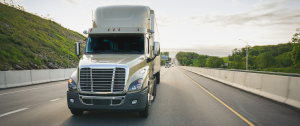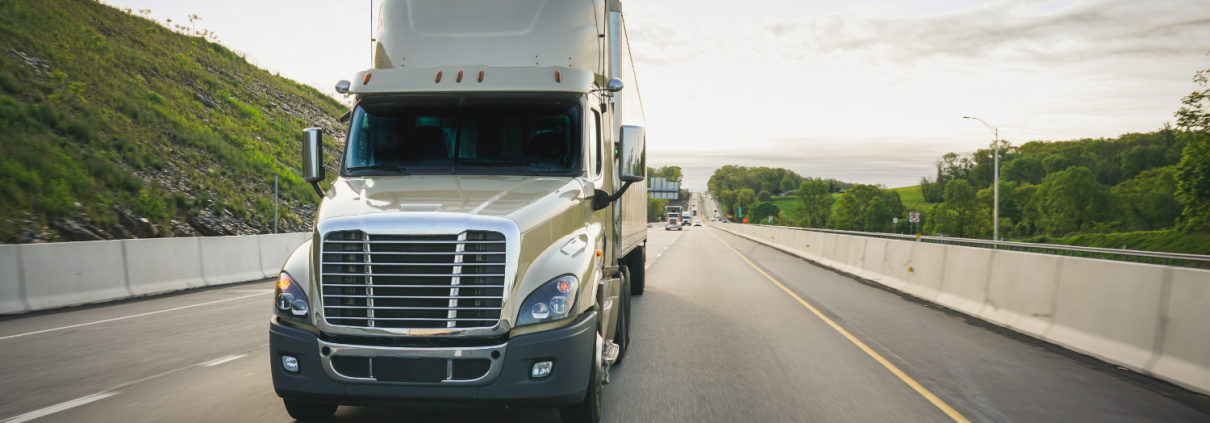
If you were to ask trucking company executives what keeps them up at night, many would say the safety of their fleet. Safety has always been a top concern for employers across the board, but has become increasingly prevalent with the amount of traffic on the roads and number of incidents involving passenger vehicles and trucks. In an effort to increase trucking safety for their drivers, many employers have implemented fleet safety programs to ensure that their teams have the tools and resources to complete their jobs as successfully and safely as possible.
One component of these fleet safety programs is the use of technology to help reduce liability in the event of an accident and provide ongoing education for drivers.
In terms of technology, one of the most widely debated issues are the pros and cons of installing driver-facing cameras. While these cameras provide security in the event of an accident, many drivers argue they take things a bit too far and infringe upon their right to privacy. Many states even have privacy laws in place which prevent the use of driver-facing cameras. With such opposing stances, it can be hard for employers to make a decision about dashboard cameras and whether they are right for their fleet or not.
What are the Pros of Installing Driver-Facing Cameras?
Motor vehicle accidents are always devastating, but those involving trucks are especially costly; emotionally, physically, and legally. According to the Federal Motor Carrier Safety Administration (FMCSA), the average cost for an accident involving a large truck is $91,000, and as much as $3.6 million, if it involves a fatality.
Proving liability in circumstances such as these is imperative to avoid costly settlements and discontent amongst drivers. This is where driver-facing cameras and dashboard cameras in general come into play. These cameras record drivers at all time, as well as the road ahead of them, which can provide much needed evidence when an accident occurs. This is essential to proving liability during a case involving an accident involving the truck. According to a study completed by the University of Michigan Transportation Research Institute (UMTRI), 70 percent of all crashes involving trucks are the fault of the passenger car, whereas 16 percent of the accidents are caused by the truck. Without video evidence, however, it is harder to prove the liability.
This is the foundation for the argument of people who are pro driver-facing camera. With increased trucking safety, and reduced liability, driver-facing cameras are an asset to any fleet.
“I don’t think there’s really any question anymore that the benefits of forward-facing cameras far outweigh any perceived downsides. Best case scenario, they exonerate the fleet and its driver in highway-accident litigation. Worst case scenario, they tip the fleet and its insurer off to the need to settle a case early on. That said, I think the jury’s still out on inward facing cameras. Some solutions seem to do a great job of detecting risky driver behavior so that fleets can get ahead of it before it causes bigger problems. But some states’ privacy laws are a roadblock, and getting driver buy-in can be difficult.”
-Brandon Wiseman, President, Trucksafe Consulting, LLC
What are the Cons of Installing Driver-Facing Cameras?
Even though the argument for enhanced safety and liability protection would sway many on the use of driver-facing cameras, many would still argue that the cons of using them still far outweigh the pros.
Most commonly the arguments against installing driver-facing cameras include:
Driver Satisfaction/Retention: Truck drivers work hard and most of their life is spent on the road. With that said, many drivers regard their truck as home and live in it while making hauls. The idea of being on a video constantly, deters many drivers from being open to having driver-facing cameras installed in their trucks. This can create retention issues for employers in a market already heavily burdened by driver shortages and high turnover rates.
Privacy: While many drivers would personally feel that their privacy is being violated using driver-facing cameras, there are also many states and territories which prohibit the use of this type of camera over privacy concerns. For fleets that traverse the country, it could be problematic having these types of cameras installed in their fleet.
Administrative Overload: Not all arguments against driver-facing cameras come from the state or drivers, however. Many companies already feel stretched thin by labor shortages and the amount of work needed to review dashboard camera footage would only increase that burden on administrative staff members.
The debate over driver-facing cameras will always be present. Ultimately, companies will need to decide what is best for trucking safety throughout their team before making the choice to install these cameras in their fleet.





